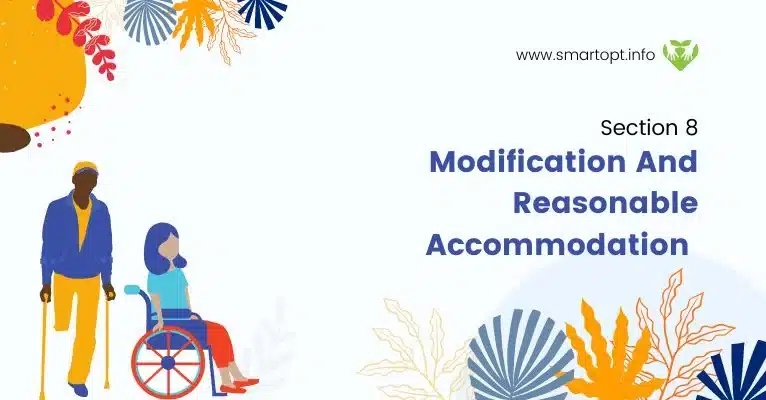How to Transfer Section 8 to Another State 2024
Planning to move to another state for a fresh start might be an exhilarating and educational experience for you and your family, creating long-lasting memories in an unfamiliar place. However, moving can also be nerve-wracking. If you’ve got a Section 8 voucher and are in search of details regarding how to transfer to another state, there are specific steps that you need to follow.
How to Transfer Section 8 to Another State

Porting refers to the process of moving your Section 8 voucher between states. Depending on where you currently reside and your plans for relocation, porting may involve various steps with slight variations depending on which state you are moving to. Here are the steps for transferring to another state.
Contact and Notify the Housing Authority

Before initiating any relocation plans, the first step should be notifying your housing authority of your intention to move. As it takes about one month to process vouchers, make sure to allow yourself enough time.
Your housing authority will evaluate if you still qualify for the voucher and verify if there are any outstanding debts or problems with your current housing situation.
If all checks out, they’ll issue you a voucher; however, if any outstanding debts or housing issues exist, you must clear them before they can be processed.
Inform Your Landlord
Your landlord needs to be made aware of your intent to move. Your lease should contain terms for breaking it early – make sure you read over this to find out exactly how. Usually, advance notice is 30 days, and written statements need to be given by both parties involved before breaking a lease contract is terminated.
Public Housing Agency sends transfer packets with notice forms requiring your landlord’s signature for you to transfer if your current lease agreement remains active. PHAs cannot allow transfer if an active lease agreement still stands between both parties involved.
Make Sure That Housing Choice Voucher Program Coverage Covers Your New Area
Since the Housing Choice Voucher program is administered at a federal level, some areas may not fall under its coverage. To determine this for a move you are planning, check with your current PHA to ensure coverage in that location; once at your new PHA, you must comply with their policies when making voucher transfers.
Your first PHA should also provide information regarding neighborhoods offering affordable housing, nearby job opportunities, and so forth in the area you are considering moving.
Your Housing Authority Will Verify Your New Location
Step two is verifying your new location with your housing authority, who must know where and why you intend to move, and confirming whether there are Section 8 vouchers in the state/city where you plan on transferring.
Once they have verified your new location, the next step involves gathering documentation from your new housing authority and collecting any required forms. Your voucher cannot be moved there is no PHA branch near where you now reside.
Send Documents to New Authority

Once you have received it all from the new housing authority, the paperwork should be returned to the existing housing authority for processing and transmission to its successor. All required documents should be sent immediately to the new one from your present one.
Here are some of the documents that the portability coordinator will need from you:
- HU-52665 and 50058 forms
- Social Security cards
- Family member’s birth certificates
- Photo identification documents
- Total household income proof
All the above documents will need to be sent along with other required items for processing your portability application.
When filing the paperwork required to secure residency, ensure all forms are filled correctly and all the required documents have been included. Otherwise, incomplete documents, forms, or incorrect information will further postpone the procedure.
If everything runs smoothly, the entire process typically takes around a month or so once everything has been processed successfully by your new housing authority. They will contact you as soon as their records show everything was approved.
Some housing authorities may require you to undergo a background check and interview as part of their application process, so follow all their instructions for an easy transition.
Find your New Home

Once approved, it’s time to search for your dream residence! Remember that some landlords do not allow voucher holders – check with the landlord before looking for properties!
Search sites like Apartments.com or Zillow because they typically include listings. Also, your family or friends could offer suggestions.
After you’ve found a few houses that you like, set up meetings so that you can physically look over each place. If you have found the perfect property, call the local housing authority so that they can review the property and ensure that it meets their standards.
After everything is approved, you can move in and enjoy your new home!
How Long Will It Take to Transfer The Vouchers between States?
On average, it typically takes 6-10 weeks, provided all appropriate steps have been followed to prevent delays and ensure your rental assistance stays with you – no matter whether it be moving one mile or one hundred away! Make sure all steps have been appropriately taken so your rental assistance remains with you during this process.
Portability Rules
If you are receiving help from the housing law, certain portability rules become crucial to help navigate the process of moving and prevent confusion from developing. We’ll go over some of the most important rules to ensure you’re confident moving into your new rental property.
Family Breakup Problems: In the event of separation or divorce, HUD gives Local housing agencies the power to determine who will receive aid and who gets it. They decide who will stay and who gets it.
Portability rules: HUD can offer assistance for families that want to move. However, aid can only be available once the expiration date of a voucher is reached.
Help with Projects: If your assistance comes from grants based on projects instead of tenant subsidy, these grants may not be available for moving to a new location.
Local Moving: Federal regulations permit moving within the traditional jurisdiction; however, HUD requires that you terminate the lease promptly in conjunction with landlords. There are a few important things to consider when relocating.
Restrictions
You must understand the limitations associated with a Section 8 voucher. For instance, if you have only received HUD assistance for less than 12 months, you cannot do it.
The program portability rules state that in order to transfer, at least 12 months must have passed since you moved into an assisted unit and signed your lease contract. Furthermore, being evicted or breaching its terms would disqualify you from being allowed to process.
This rule applies only in domestic violence cases, so be sure to get all restrictions from your current housing authority before beginning this process.
Bottom Line
Transitioning with the program assistance may seem intimidating initially, with numerous things to consider and transfer strategies available in different states. We hope our information on How you can Transfer can help guide the way and highlight which aspects should be prioritized when moving states with Section 8.







